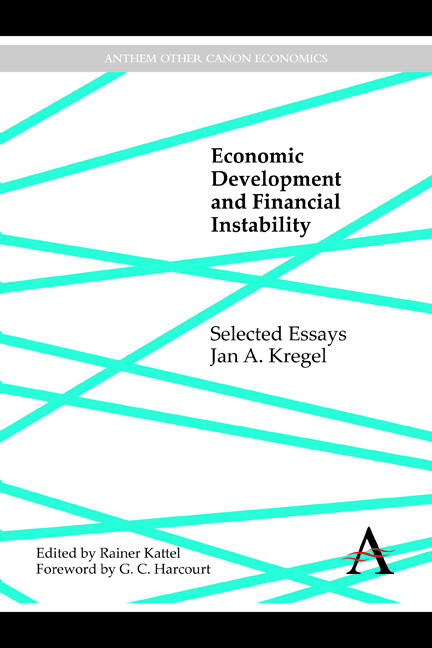Book contents
- Frontmatter
- Contents
- Foreword
- Publication History
- I Theoretical Discussions
- II Finance for Development
- 9 East Asia Is Not Mexico: The Difference between Balance of Payments Crises and Debt Deflations
- 10 Yes, “IT” Happened Again: The Minsky Crisis in Asia
- 11 Financial Liberalization and Domestic Policy Space: Theory and Practice with Reference to Latin America
- 12 Derivatives and Global Capital Flows: Applications to Asia
- 13 Was There an Alternative to the Brazilian Crisis?
- 14 An Alternative View of the Argentine Crisis: Structural Flaws in Structural Adjustment Policy
- 15 The Discrete Charm of the Washington Consensus
- III The Crisis in the US and the EU
- Index
9 - East Asia Is Not Mexico: The Difference between Balance of Payments Crises and Debt Deflations
from II - Finance for Development
Published online by Cambridge University Press: 05 November 2014
- Frontmatter
- Contents
- Foreword
- Publication History
- I Theoretical Discussions
- II Finance for Development
- 9 East Asia Is Not Mexico: The Difference between Balance of Payments Crises and Debt Deflations
- 10 Yes, “IT” Happened Again: The Minsky Crisis in Asia
- 11 Financial Liberalization and Domestic Policy Space: Theory and Practice with Reference to Latin America
- 12 Derivatives and Global Capital Flows: Applications to Asia
- 13 Was There an Alternative to the Brazilian Crisis?
- 14 An Alternative View of the Argentine Crisis: Structural Flaws in Structural Adjustment Policy
- 15 The Discrete Charm of the Washington Consensus
- III The Crisis in the US and the EU
- Index
Summary
What was different about the collapse of the Asian emerging markets in 1997? The free fall of the Mexican peso and the collapse of the Mexican Bolsa produced a “Tequila effect” that spread through most of South America, but did not create a sell off in the global financial markets similar to that which occurred on 27 October 1997. Normally, sharp declines in prices in emerging equity markets produce a “flight to quality”, in which international investors shift their funds back into developed country markets and local investors seek to protect their wealth by diversifying into developed country assets. Yet, the collapse in the Asian emerging markets, that started in Thailand, spread to the other second-tier Newly Industrialising Economies (NIEs), and eventually extended to the first-tier NIEs produced the largest absolute declines ever experienced in the major developed country equity markets. If equity markets can suffer from what Alan Greenspan has called “irrational exuberance”, the Asian crisis suggests that they may also suffer from “irrational pessimism”. Yet, there is much to indicate that in this case the financial markets in Japan, Europe and the US were quite rational in assessing the global implications of the financial crisis in Asia.
The developing countries in Asia have come to play a crucial role in global growth. In the 1990s, they accounted for roughly half of global expansion. The immediate implication of the Asian crisis is that the collapse of growth in the region would produce a global deflation.
- Type
- Chapter
- Information
- Economic Development and Financial InstabilitySelected Essays, pp. 135 - 152Publisher: Anthem PressPrint publication year: 2014



